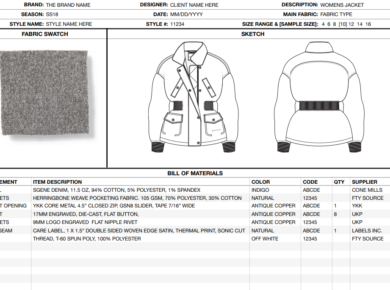Introduction:
We’re in an era of unprecedented data availability, yet many businesses find themselves drowning in information rather than leveraging it for strategic advantage. This is particularly true in sourcing and procurement, where data-driven decisions can significantly impact a company’s bottom line.
Despite the challenges of managing scattered or incomplete data, the increasing adoption of new technology like artificial intelligence and machine learning technologies has elevated the importance of structured, high-quality data. One of the biggest problems and hurdles most companies face when trying to use new technologies is the availability and quality of data. Companies that master data management in their sourcing and procurement processes stand to gain a significant competitive edge.
This guide offers practical steps for transforming your data from a chaotic jumble into a powerful decision-making tool.
1. Setting the Foundation: Defining Your Data Management Goals
Before diving into the specifics of data management, it’s essential to establish clear objectives. Your data management goals should align with broader business strategies, whether they involve cost reduction, efficiency improvements, or enhanced sustainability in sourcing.
To begin, consider these steps:
- Identify your top three business challenges in sourcing and procurement.
- For each challenge, determine what information would be necessary to address it effectively.
- Evaluate how improved data management could help tackle these challenges.
For instance, if cost reduction is a priority, you might need better visibility into supplier pricing across different regions. If risk management is a focus, comprehensive data on geopolitical factors affecting your supply chain could be crucial.
2. Identifying Critical Data Points in Sourcing and Procurement
Once goals are established, the next step is to identify the key data categories that will drive decision-making. In sourcing and procurement, several common and critical data points can significantly impact operations:
- Supplier pricing and costing: Accurate, up-to-date pricing information is fundamental for effective negotiations and cost management.
- Factory performance and scorecards: Data on quality, on-time delivery, and responsiveness informs supplier selection and management.
- Supplier status and partnership commitments: This information guides strategic interactions and negotiations with suppliers.
- Lead times: Accurate lead time data is essential for effective planning and inventory management.
- Supplier capabilities: A clear understanding of each supplier’s strengths and limitations enables optimal supplier-project matching.
In addition to these straightforward data points, teams often rely on a variety of information sources to make decisions such as geopolitical risk factors and trade regulations. However, much of this information is unstructured and siloed. The key to unlocking the full value of your data lies in identifying and transforming these information sources into structured, actionable data points that can be integrated into broader systems and processes.
Consider the following:
- Examine how your teams currently make decisions. What information sources do they rely on? Are they using news articles, industry reports, or informal supplier communications?
- For each information source, determine what specific data points could be extracted. For instance, news about geopolitical events could be transformed into risk scores for specific regions or suppliers. (How can you make numerical / quantitative data?)
- Create processes to consistently extract and structure these data points. This might involve using natural language processing to analyse news articles or developing standardised forms for supplier communications.
- Implement scoring and synthesis systems: Develop methodologies to quantify qualitative information. For example, create a risk scoring system based on various news and market indicators.
- Ensure these newly structured data points can be seamlessly incorporated into your existing procurement and analytics platforms.
By transforming scattered information into structured data points, you create a more comprehensive, consistent and objective basis for decision-making.

3. Assessing Your Current Data Landscape
With key data points identified, the next step is to evaluate your current data assets. This audit process involves:
- Cataloguing all potential data sources, including ERP systems, master data, spreadsheets, emails, and physical records. (Where is it?)
- Mapping each identified data category to its current storage location (Does it exist? Do we have records of it?).
- Evaluating the quality and accessibility of existing data, considering factors like accuracy, timeliness, and usability. (Can we use it in its current state?)
- Identifying gaps in critical information. (What are we missing?)
This assessment provides a clear picture of your data strengths and weaknesses, forming the basis for targeted improvements.
4. Building a Robust Data Collection Framework
Most likely there are gaps and data that you’ll need to create and collect. Addressing identified gaps requires a strategic approach to data collection. Consider the following strategies:
- Design user-friendly processes: Simplify data input methods to encourage consistent use across the organisation.
- Automate where possible: Explore opportunities for automatic data collection, such as integrating supplier systems.
- Foster a data-driven culture: Encourage team members to consider data in their daily decision-making processes.
Start by focusing on one or two key areas where improved data could have a significant impact, then expand your efforts over time and then look at establishing data governance and quality control processes. This will ensure the long-term accuracy, consistency, and usability of your data. Key elements include:
- Setting clear standards: Define what constitutes high-quality data for your organisation, including naming conventions, required fields, and update frequencies.
- Assigning responsibility: Clearly designate owners for different types of data to ensure accountability.
- Implementing validation processes: Incorporate checks to identify and correct errors early in the data lifecycle.
- Conducting regular audits: Schedule periodic reviews to maintain data quality over time.
While perfection isn’t the goal, steady improvement in data quality can significantly enhance decision-making capabilities.
5. Leveraging Technology for Data Management
This is the moment when you turn your spaghetti of data into a cohesive, manageable structure. Focus on consolidating your data and implementing tools to analyse and derive insights from it effectively.
Both off-the-shelf and custom solutions can be considered, with the primary goal of centralising your data in a way that allows for easy access and analysis.
Key considerations:
- Centralised database solutions to consolidate data from various sources
- Analytics tools to process and derive insights from collected data
- AI and machine learning capabilities to enhance data analysis and prediction
When selecting technologies, prioritise solutions that integrate well with existing systems and align with your organisation’s technical capabilities.
6. From Data to Insights: Applying Analytics in Sourcing and Procurement
With a solid data foundation in place, you can begin to leverage advanced analytics for strategic decision-making. Consider implementing:
- Basic analytics techniques for spend analysis and supplier performance evaluation
- Advanced analytics and predictive modelling for demand forecasting and risk assessment
- Data visualisation tools to communicate insights effectively across the organisation

7. Preparing for the Future: Data Management for AI and LLMs
As artificial intelligence (AI) and large language models (LLMs) become increasingly integrated into business operations, the importance of clean, structured data cannot be overstated. While modern LLMs can process natural language, structured data remains crucial for training AI models tailored to your organisation’s specific needs and practices.
To prepare your data infrastructure for AI and LLM applications:
- Ensure data consistency: Implement standardised formatting and labelling across all data sets.
- Establish data provenance: Develop clear documentation of data lineage and quality assurance processes.
- Identify AI use cases: Explore potential applications in sourcing and procurement, such as strategic sourcing optimization, decision support systems, automated contract analysis or predictive supplier risk assessment
By maintaining high-quality, structured data, you position your organisation to leverage AI and LLMs effectively, enabling the development of custom models that align with your unique operational context and strategic objectives.
Conclusion:
Improving data management in sourcing and procurement is a journey that requires commitment and ongoing effort. By setting clear goals, identifying critical data points, and implementing robust processes for data collection and governance, organisations can transform their data from a scattered resource into a strategic asset. As the business landscape continues to evolve, those with strong data foundations will be best positioned to leverage new technologies and maintain a competitive edge.
Interested in discussing data management strategies for sourcing and procurement? We’re always keen to exchange ideas and experiences with industry colleagues. If you’d like to continue the conversation, feel free to reach out.






